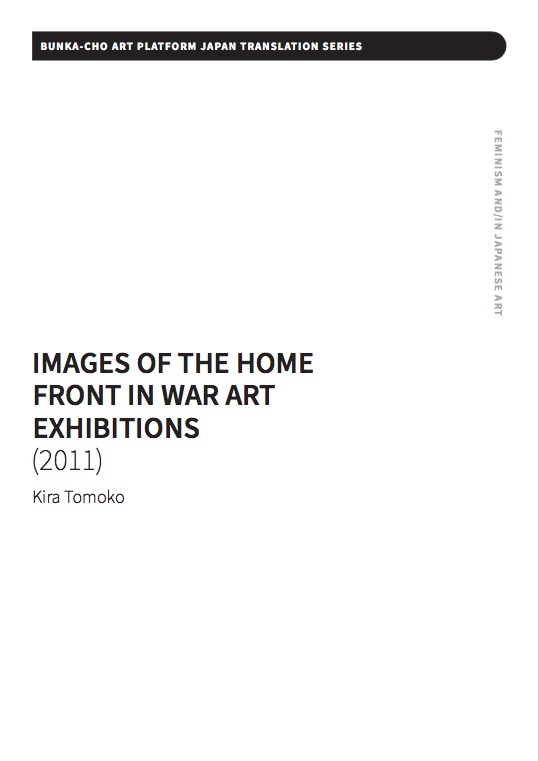Images of the Home Front in War Art Exhibitions
Kira Tomoko
R202214

In this article, art scholar Kira Tomoko (b. 1974) analyzes the “war art” created by women artists during the Asia-Pacific War and reconsiders the position of women artists in modern art history.
Exhibitions of war art during the Asia-Pacific War continuously featured images of helpless “praying women” who contributed nothing to production activities. These had a complementary relationship with “images of the battlefront” that served to reinforce the soldiers’ reasons for fighting and ennoble the men who were fighting. Consequently, Kira argues, though many women took on a diverse array of labor efforts in place of men, the representation of collaborative home front labor efforts were downplayed. Kira focuses on Japanese Women All Working Together for the Great East Asia War Effort, a work that cannot be read within this traditional “home front images” framework. Almost no men appear in All Working Together, and women are depicted in a variety of contradictory representations as a result. On the one hand, you have women performing various labors in lieu of men. On the other hand, you have images of “praying women.” The multilayered nature of images of women, or women on the home front, is thus made clear.
Kira argues that the worldview in All Working Together, in which women join in solidarity and exercise self-reliance in a world without men, keenly perceives and represents fluctuations between the official and actual gendered order of the wartime period, standing as an antithesis to “praying women” images. As a result, she positions the women artists of the Services Corps as taking up avant-garde methods of production, similar to those of proletarian works, and raising a serious, albeit unplanned, objection to the modern state.
- Title
- Images of the Home Front in War Art Exhibitions
- Author
- Kira Tomoko
- First published
- 2011
- Translation
- Asato Ikeda
- Editing
- Nick Hall, Imoto Chikako
- Design
- Ian Lynam
- Theme
- Feminism and/in Japanese Art
- First Posted Online
- 2022-11-17
- Last modified
- 2022-11-17
© 2022 Kira Tomoko + Bunka-cho Art Platform Japan
The newly published English translations on this website (https://artplatform.go.jp) can be used without permission only for the purposes of education, research, critique, survey, and the like. English translations cannot be copied for the purpose of sale or distribution. You must comply with the Rules Governing the Use of the English Translations.
- Citation
- Footnote/endnote: Kira Tomoko, "Images of the Home Front in War Art Exhibitions," trans. Asato Ikeda, Bunka-cho Art Platform Japan, posted November 17, 2022, artplatform.go.jp/readings/R202214.
Bibliography: Kira Tomoko. "Images of the Home Front in War Art Exhibitions." Translated by Asato Ikeda. Bunka-cho Art Platform Japan. Posted November 17, 2022. artplatform.go.jp/readings/R202214. - Original Japanese Edition
- Kira Tomoko “Sensō bijutsuten ni okeru ‘jūgo’ no zuzō” in Nijusseiki no josei bijutsuka to shikaku hyōshō no chōsa kenkyū: Ajia ni okeru sensō to diasupora no kioku [Research on women artists and visual representations in the twentieth century: Memories of war and diaspora in Asia] (2011): 11–29.
吉良智子「戦争美術展における『銃後』の図像」『20世紀の女性美術家と視覚表象の調査研究』(2011年)、11–29頁。 - National Diet Library(NDL)
- https://id.ndl.go.jp/bib/000011250398
- ISBN
